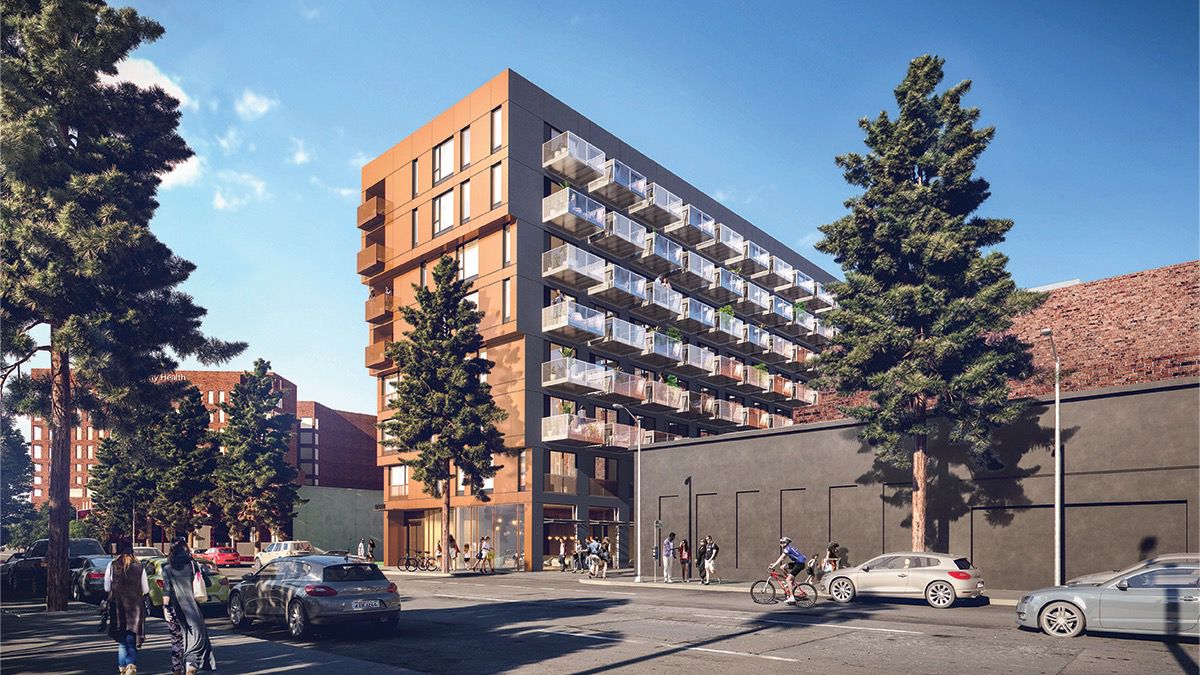LOS ANGELES — When the coronavirus crisis hit, several of Brad Padden's investors began bombarding him with questions about the viability of micro-housing projects during a pandemic.
Padden is the CEO of Housing Diversity Corp., a Seattle-based housing developer that specializes in building micro-housing apartments. The company has two micro-housing projects in various stages of planning and construction in Los Angeles.
"I've had investors from friends and family to institutional, banks, underwriters, and appraisers, and they are all asking the same thing," Padden said, referring to the future of micro-housing. "I've always felt that micro-housing projects, because they are smaller and more affordable units, that it would be really resilient in a situation like a downturn or some type of financial shock in the market. Who would have guessed that the financial shock would be a pandemic?"
While still a bit early to tell, since the coronavirus's arrival, the pandemic has changed what some renters want in an apartment unit, experts said.
With non-essential workers stuck at home and working remotely, many are analyzing their living space and want more room to work and relax in. But this desire for more space could curtail the development of micro-housing, a trend that was picking up in Los Angeles in recent years. Housing experts and city officials see the development of micro-housing as a way to bring in more (smaller) apartment units at a lower-end price point and meet the county's severe housing shortage. The county needs housing developers to build 500,000 affordable units to meet demand, a report from last year shows.
"Los Angeles is in a housing crisis that is placing a severe burden on low and moderate-income residents, exacerbating homelessness, straining state and city budgets, and jeopardizing the continued growth of our economy," Los Angeles Councilmember Gil Cedillo wrote to the council last August. "Micro-units are emerging across the country as one way to help address this crisis by increasing housing stock and diversity while providing homes that are naturally affordable to moderate-income residents without public subsidies."
Micro-housing, also known as micro-units, is a blanket term that describes an apartment project built with smaller individual units. The units, usually with a full kitchen and bathroom, range from 140 square feet to 375 square feet. It is about the size of an average hotel room. For context, in Los Angeles, the average apartment is about 800 square feet, according to RENTCafé.
The micro-housing trend began in Seattle right around the end of the Great Recession, with 5,500 units built, and eventually made its way to Los Angeles in recent years. It is unclear exactly how many micro-housing apartments there are in Los Angeles, but a few have popped up in urban areas such as Santa Monica and downtown Los Angeles. Pasadena, Culver City, Long Beach, and Los Angeles have all looked into streamlining its development.
Micro-housing is seen as a way to build more units with less space and at an affordable price point. The developments are usually located in dense core neighborhoods and next to a major metro or transit line.
Housing Diversity Corp.'s recently entitled project at 1317 South Grand Ave. in South Los Angeles will stand eight stories with 151-units averaging 325 square feet and built on top of a 9,000 square foot lot. The building is a 3-minute walk to the nearest Metro. The average rent will probably be around $1,600. Meanwhile, other market-rate apartments, while bigger, tend to fetch $2,000 to $2,500 in Los Angeles. Padden's other micro-housing development in Hollywood will have 69 units and average 375 square feet.
"A lot of young people and young professionals don't need a lot of space and want to live in these types of neighborhoods where they can either walk to work or take the subway to work," Padden said.
However, the coronavirus outbreak and subsequent stay-at-home orders have forced people to look closer at their living situation. With many working from home, either full-time or part-time, possibly long-term, some want more space.
"Shelter-in-place orders across the U.S. to contain COVID-19 have forced many of us to negotiate dining tables, kitchen counters, sofas, and even garages with our spouses, roommates, children, and pets," architects at international design firm HKS wrote in May. "Suddenly, our living rooms may feel unbearably small, or too dark, with no escape to focus or relax. Some of us may regret not getting a place with a porch or a balcony. While single-family homeowners have more leeway to adapt their homes to new needs, many apartment tenants feel boxed in by intractable surroundings."
HKS said that now is the time for housing developers to adjust their multifamily buildings to prepare for a post-coronavirus world and begin thinking about maximizing their unit space.
Padden said he has not personally seen that migration of people moving out of his micro-housing buildings in Seattle for larger pastures so far. Padden has a portfolio of 500 micro-housing units averaging 270 square feet in Seattle.
"We are using [Seattle] as a bellwether for our other developments," Padden said. "I think we've built a very resilient and robust product because many of our tenants are single professionals who have a certain affordability and lifestyle."
Occupancy for those buildings are in the upper 80s, he said.
Since the pandemic began, Padden also said they have not made any COVID-related design changes to their buildings. Since these are brand new developments, the buildings will have an upgraded HVAC system, and the common areas will be monitored.
Padden remains bullish that despite the pandemic and some people wanting to live in larger units, there is still a market and demand for micro-housing, especially in Los Angeles. Affordability is the driving force, he said.
"One thing that we have learned through all of this is that people, humans want to be together and be part of a community," he said. "I believe there is still a huge demand for this kind of housing. Affordability never goes out of style."
